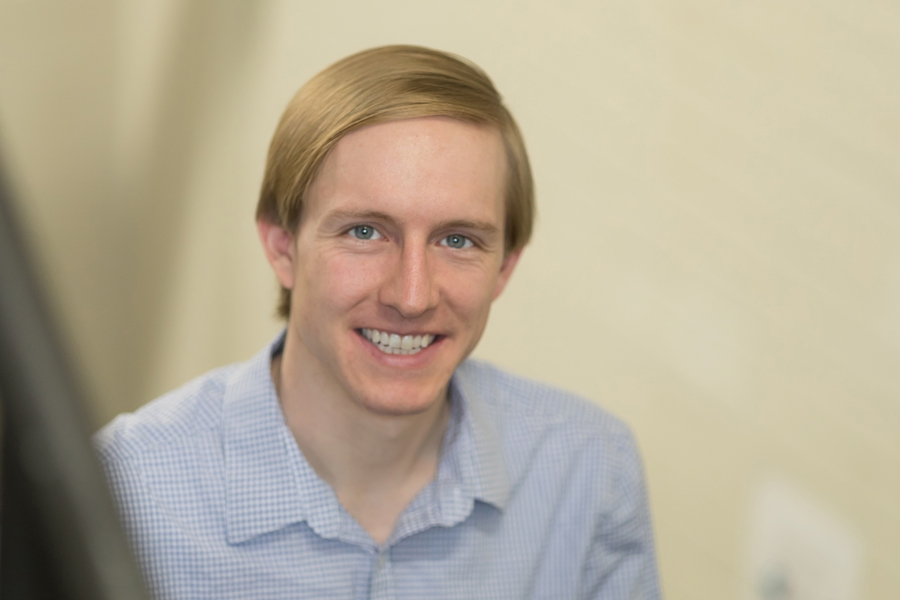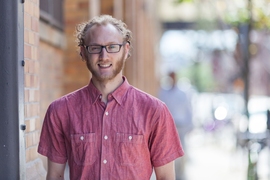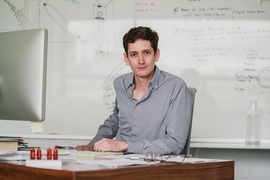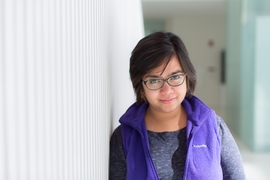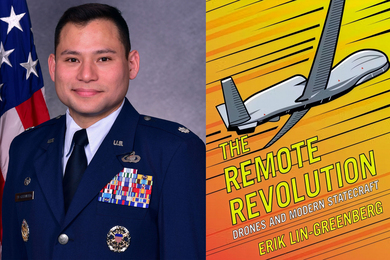As a graduate student in MIT’s Laboratory of Nuclear Science (LNS) in the Department of Physics, Brian Henderson applied his skills in physics to study sub-atomic particles, such as protons. He is now the first Stanton Fellow in Nuclear Science and Security in the Laboratory for Nuclear Security and Policy in the MIT Department of Nuclear Science and Engineering (NSE). His job is to put his experience in experimental particle physics to work in the realm of nuclear weapons detection, with an eye for making sure nuclear weapons policies are scientifically plausible.
“No one wants me to come here and just build experiments,” says Henderson. “My role is to have a broader perspective, which is very appealing. I’m interested in finding ways for my skills to be useful to society.”
Henderson’s projects are related to nuclear weapons detection. In one, he is exploring potential ways to solve the difficult problem of patrolling United States ports for nuclear materials that may be concealed among the tens of thousands of containers arriving in U.S. ports each day. “Cargo containers are generally considered the easiest way to smuggle a nuclear weapon into a populated area,” says Henderson.
The strategy may appear simple — scan the cargo and flag containers that could potentially contain a nuclear weapon or weapons material — but it is scientifically tricky. To get a good picture of what’s inside a container, a scanning system must deliver a high dose of radiation. So Henderson and his advisor Areg Danagoulian, assistant professor of NSE, are experimenting with ways of interrogating the cargo with the least amount of radiation possible.
The second project is related to a nuclear weapons verification project that supports nuclear disarmament. The technology aims to allow an inspector overseeing a treaty-driven nuclear weapons dismantlement process to authenticate a weapon with confidence yet still have no access to the classified information about that weapon’s design. Henderson’s first job is to help put together an experimental setup that mimics a real warhead in need of verification. He is also working with scenarios involving fake nuclear weapons designed to defy the system.
“I joined this group to bring my experimental experience to these problems,” says Henderson. “The plans in place are sound on paper, but what we need to do now is build an experiment.”
As an undergraduate at Rice University, Henderson majored in physics and mathematics and participated in several undergraduate research projects in particle physics. Experiences working at Brookhaven National Laboratory and at Cornell University convinced him that his role in particle physics was as an experimentalist — working with particle detectors and accelerators and simulations of particle interactions — and not as a theorist.
Henderson wanted to continue work on particle physics in graduate school, but he didn’t want to participate in the very large experiments, such as those at the Large Hadron Collider. Experiments there often have thousands of physicists participating and writing papers together. “I wanted to work on a small team experiment,” he says.
There are few to choose from, but he found one at MIT’s Laboratory for Nuclear Science. He studied hadronic physics and focused on particles like protons and neutrons. He worked on an experiment called OLYMPUS with a goal of learning more about the composition of protons. It is understood that protons are not elemental particles; they are made of other particles. But it isn’t clear how those particles are distributed within the proton.
OLYMPUS, like most experiments in particle physics, is designed to uncover more about the composition of the proton by shooting things at it. “It’s a bit like having a hard object in a paper bag and shooting BBs at the bag to try to learn more about what’s inside,” says Henderson. “It’s the same with a proton, but we’re probing at a much smaller scale.”
These types of experiments inform theories about protons and neutrons and also about how most of the mass we experience in the world arises, which is still somewhat of a mystery. Henderson’s work was narrowly focused. He contributed to a specific test of a single hypothesis about two competing methods of making the same measurement. The two methods produce different results, underscoring a gap in physicists’ understanding of the underlying physics. Henderson’s project was part of an effort to close that gap.
Instead of pursuing a career with a continued focus on such fundamental science, when Henderson completed his PhD in 2016, he wanted to apply his skills more broadly. He found a match at NSE. “I’m working on bigger questions not only from a scientific perspective, but also from a societal perspective,” he says.
